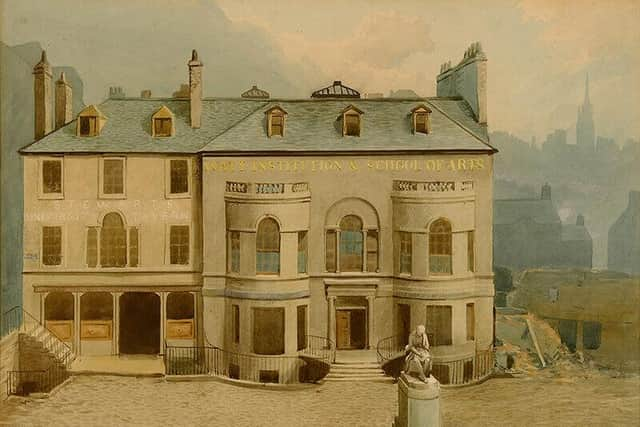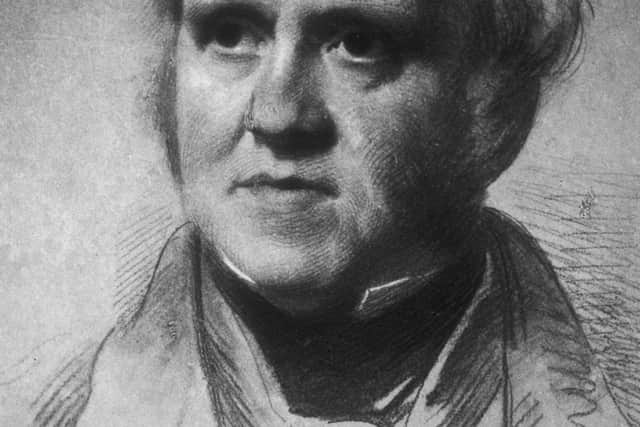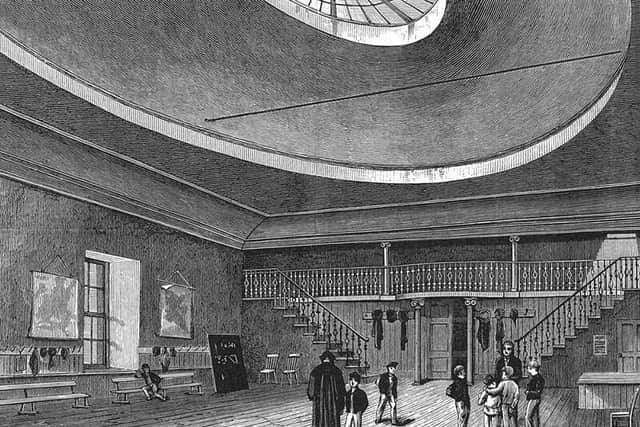Appeal launched to celebrate 200th anniversary of trailblazing mechanics institutes which Scotland exported to the world
Now a hunt has been launched for information about the history of Scottish mechanics institutes to celebrate their first lecture in Edinburgh 200 years ago.
At least 9,000 of these centres of learning were established across the world, including in the rest of Britain, Australia, Canada, India and the United States.
Advertisement
Hide AdAdvertisement
Hide AdThey mushroomed in popularity as cities grew rapidly with the Industrial Revolution, fuelling a huge demand for “mechanics”, or skilled workers.
The institutes were championed by the newly-established The Scotsman in the face of Tory opposition, which feared that educating workers would overturn the social order.
Many of their buildings became as central to their communities as town halls and libraries, into which some evolved.
They were also used for generations of social and family celebrations, and were used for generations of family occasions such as wedding receptions.
The first institute was founded as the School of Arts of Edinburgh in 1821, at St Cecilia’s Hall, off the Royal Mile, which eventually became Heriot-Watt University.


Sir Walter Scott, who addressed the school’s third annual meeting, said he “warmly approved of the institution” and “considered it as a great crime to hide knowledge from people as it would be to hide the sun from them if they had that power”.
The new research project is being led by Sue Roaf, emeritus professor of architectural engineering at Heriot-Watt, who is compiling a Gazetteer of Scottish Mechanics’ Institutes with colleague Anne Ormston.
A conference is also being held in October at St Cecilia’s Hall to mark the anniversary of the first lecture in October, along a photographic and poetry competition, and celebratory dinner.
Advertisement
Hide AdAdvertisement
Hide AdAn interactive map been created which charts current knowledge of the Scottish institutes’ spread through the decades.


Professor Roaf said: “Our project will show how Scotland led the world in educating generations for the industrial and transport revolutions through an amazing adult education system.
“The institutes were an extraordinary phenomenon and spread like wildfire, not least by Scots who travelled abroad and understood their value.
"They helped place Scotland as a leading player in the technical revolutions that have underpinned modern economies.
“They provided evening classes for educated workers in the steam, rail, canal, shipping and manufacturing industries that fuelled economic growth.


"The institutes are being forgotten, yet they were instrumental in who we are as a nation.
"They aimed not to train trades but to educate people to a high level in the scientific principles – to raise them to the level of the educated middle classes.
“The institutes provided the ladder for many hard-working, bright, brilliant people to blossom.”
Advertisement
Hide AdAdvertisement
Hide AdProf Roaf appealed to readers to email information to [email protected]
She said: “We want you to send in memories, memorabilia and photos you might have of institutes in your own home town.
"You may have stories about using the library there, or dances or weddings or poetry recitals and lectures, or what the buildings went on to become.
"It will help us to build up a much more complete map of them and their histories for the gazetteer.”
The School of Arts of Edinburgh was established in 1821 by educational reformer Leonard Horner “for instruction of mechanics in such branches of physical science as are of practical application in their several trades”.
Two years later, the Glasgow Mechanics Institution was formed, with classes given in a disused chapel in Shuttle Street in the Merchant City, east of George Square.
It later became part of Glasgow and West of Scotland Technical College in 1887, then the University of Strathclyde.
Also in 1823, the first English institutes opened in Liverpool and London, the latter becoming Birkbeck College, whose founder George Birkbeck had helped lay the foundations of the movement with classes in Glasgow in 1800.
Advertisement
Hide AdAdvertisement
Hide AdAn institute in Manchester established the following year is now part of the University of Manchester.
They spread to Australia in 1827, first in Hobart, then Sydney five years later and Melbourne in 1839.
By 1830, there were at least 17 institutes in Scotland, including in Aberdeen, Dundee and Hawick, with the total topping 100 by the end of the century.
The Aberdeen institute became a lending library and community hub, before being taken over as a hotel, while Dundee’s became part of Abertay University.
Those benefiting from the institutes’ classes included John Fullerton, from a village in Aberdeenshire, who who left home to work in a cotton mill aged ten to help support his family.
He won an English prize at the Mechanics Institute in Aberdeen and went on to become a solicitor, estate factor, lecturer and award-winning poet with a column in the Peterhead Sentinel newspaper.
Opponents of the institutes included the Tory-supporting Blackwood’s Edinburgh Magazine, which claimed they were “calculated to take the working classes from the guidance of their superiors” and “make these mechanics the corrupters and petty demagogues of the working orders generally”.
However, they were strongly supported by The Scotsman, which publicised the first Edinburgh lecture, in chemistry, that led to more than 400 students enrolling within a month.
Advertisement
Hide AdAdvertisement
Hide AdThe School of Arts of Edinburgh initially taught only chemistry, natural philosophy, architecture and farriery (horse shoeing), with other subjects such as maths, English, French and drawing being added later.
In 1837, it moved to Adam Square in the Old Town, two years after the first working class representatives joined its board of directors.
The school taught only men until campaigner Mary Burton led a successful move for women to be admitted in 1869, and became the first female board member.
More information about the hunt for information is at: https://mechanicsinstitutes.org/the-scottish-mechanics-institute-hunt/
A message from the Editor:
Thank you for reading this article. We're more reliant on your support than ever as the shift in consumer habits brought about by coronavirus impacts our advertisers.
If you haven't already, please consider supporting our trusted, fact-checked journalism by taking out a digital subscription.
Comments
Want to join the conversation? Please or to comment on this article.
